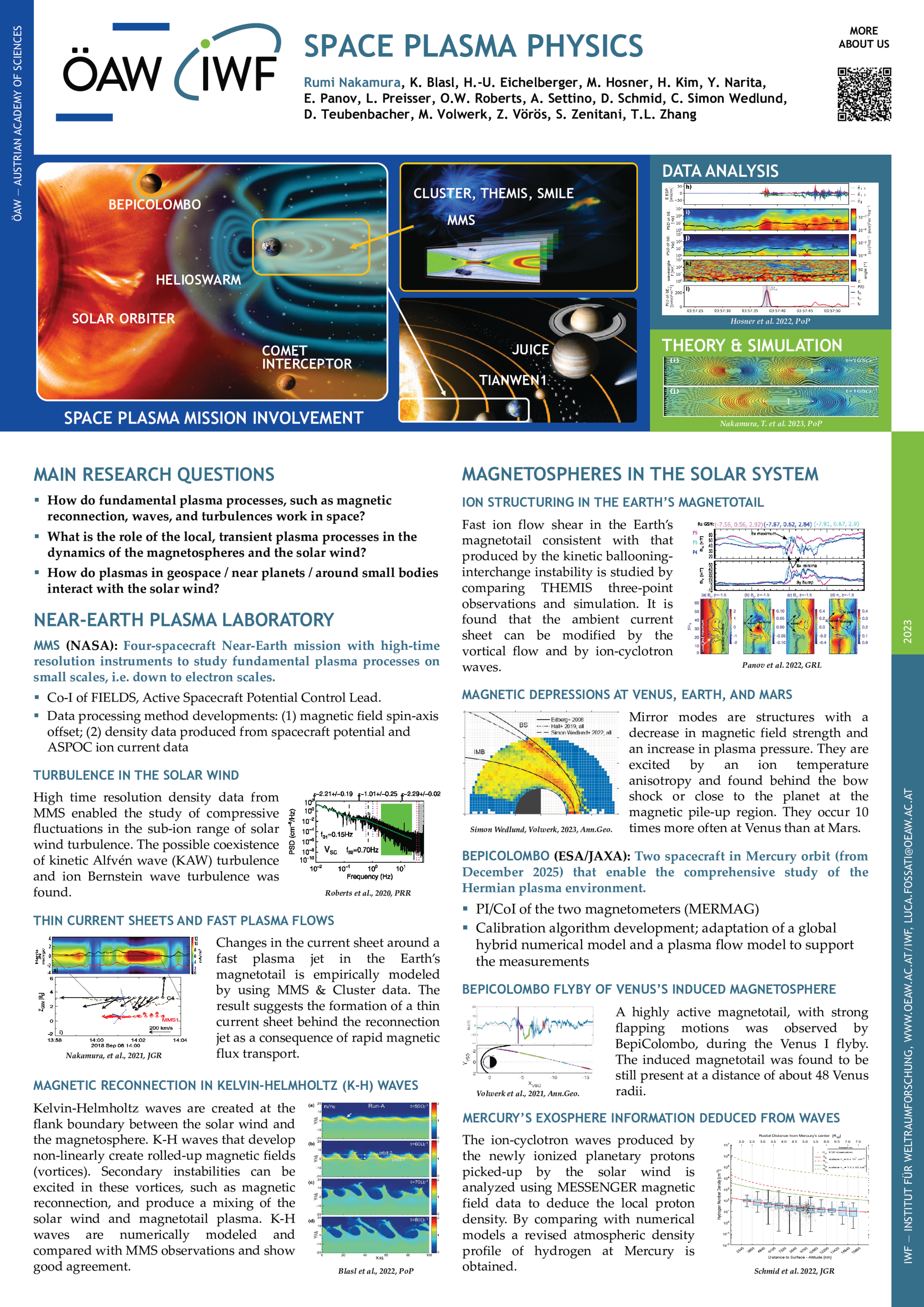Space Plasma Physics

The Space Plasma Physics group carries out research into plasma processes throughout the heliosphere, including the magnetospheres of Earth and other planets and the solar wind. Fundamental plasma processes in the solar system are investigated through theoretical modeling and by analysis of satellite data.
The Earth's magnetosphere originates from the interaction between the solar wind and the Earth's magnetic field. The solar wind distorts the terrestrial dipole field, compresses it at the dayside and expands it on the night side. Thereby the magnetic tail is created which acts like a windsock in the breeze. At the night side of the magnetosphere, in the magnetotail, there are oppositely directed magnetic fields which induce a current in the central plane of the tail. Electromagnetic energy is stored in the stretched field lines in the magnetotail. When these oppositely directed fields are pressed together, they can reconnect. Hereby, a substantial part of the electromagnetic energy can accelerate particles, which can then penetrate into the Earth's ionosphere and atmosphere and generates the aurora. Such interactions are also present in the magnetospheres of other planets.
The solar wind is a turbulent flow from the Sun's outer atmosphere into interplanetary space and forms a bubble around the solar system called the heliosphere. Explosive solar flares can release large amounts of energy and mass in the form of a plasma cloud from electrically charged particles. The solar wind influences the movement of dust in the heliosphere and interacts with local magnetic fields affecting the atmospheres and magnetospheres of the planets, moons and small celestial bodies.
The research group's data analysis focuses on space missions for which IWF has built scientific instruments such as Cluster, THEMIS, Rosetta, MMS, BepiColombo, Solar Orbiter and JUICE. Cross-cutting research topics are:
- Fundamental plasma processes such as current sheets, magnetic reconnection, shocks, plasma instabilities and plasma turbulence.
- The interaction between the solar wind, magnetosphere and ionosphere of the Earth and other planets.
In addition to the analysis of satellite data from currently flying missions, the research group also deals with the planning and preparation of future space missions.
